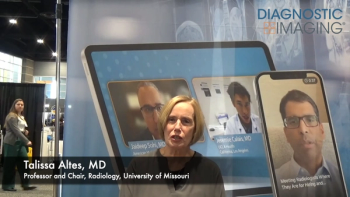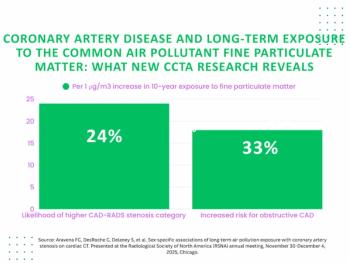
Report from NCRP: CT-based radiation exposure in U.S. population soars
The amount of radiation dose from clinical imaging exams experienced by the U.S. public may have increased more than 600% in the last two decades, most of it due to CT, according to preliminary findings from a study released at the 2007 National Council on Radiation Protection and Measurements meeting in Arlington, VA.
The amount of radiation dose from clinical imaging exams experienced by the U.S. public may have increased more than 600% in the last two decades, most of it due to CT, according to preliminary findings from a study released at the 2007 National Council on Radiation Protection and Measurements meeting in Arlington, VA.
The estimated collective effective dose that the U.S population received from diagnostic procedures in 1980 was 0.54 mSv per capita. That total increased to 3.2 mSv in 2006.
In that 26-year period, the collective annual dose rose 650%, from 124,000 person-Sv annually in 1980 to about 930,000 person-Sv in 2006, said principal investigator Dr. Fred A. Mettler Jr., chief of radiology and nuclear medicine at the New Mexico Federal Regional Medical Center.
Mettler leads an NCRP scientific committee that is compiling estimates on the radiation exposure of the U.S. population from natural background sources and medical imaging equipment. The study includes imaging modalities that did not make its last comprehensive evaluation performed in 1987, such as CT, fluoroscopy, nuclear medicine studies like PET, and hybrid scanners.
The group reviewed data from public and private sources, including IMV Benchmark, Medicare, and the VA. Medical radiation sources include radiography, CT, dental x-rays, nuclear medicine, radiotherapy, and interventional radiology procedures.
The preliminary assessment found that CT and nuclear medicine exams account for the largest increase in dose. CT represents 12% of all procedures and 45% of the estimated effective collective dose. Nuclear medicine is responsible for 3% of the total number of medical imaging exams and 23% of the estimated effective collective dose.
"The growth of CT has been greater than 10% per year, while the U.S. population has grown at less than 1%. We went from three million CT scans in 1980 to more than 62 million by 2006," Mettler said.
Nuclear medicine has been growing steadily at about 5% per year since the 1980s. In 2005, there were almost 20 million studies per year. Cardiac studies account for 57% of all nuclear medicine procedures and 85% of the dose.
"There has been a big shift over the last several years, where radiologists used to do a lot of nuclear medicine studies. Now they do about 20%, and most of it is done by cardiologists," Mettler said.
The Chernobyl nuclear power plant accident in 1986 produced a global collective dose of 600,000 person-Sv. Although the estimated collective effective dose of 930,000 person-Sv in the U.S. population seems impressive by comparison, it may be too early to extrapolate figures. What is clear to researchers, however, is that dose has increased and most physicians do not understand the magnitude of this increase, he said.
"The largest controllable source of radiation exposure is medical imaging, but it remains unregulated," he said.
Special section: Exclusive coverage of the 2007 National Council on Radiation Protection and Measurements meeting
This year's historic NCRP meeting reveals the disturbing growth of patient exposure to ionizing radiation from medical imaging and proposes practical solutions to regulate its growth. Extended coverage from Diagnostic Imaging lays out the facts and recommendations to better protect patients, physicians, and medical staff.
Newsletter
Stay at the forefront of radiology with the Diagnostic Imaging newsletter, delivering the latest news, clinical insights, and imaging advancements for today’s radiologists.




























